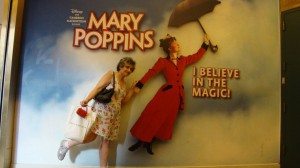BOSTON, Mass.—Nancy Kalajian is not one to rest upon her many laurels.

The long-time educator took advantage of a grant from the National Endowment for the Humanities (NEH) to take a food- and immigration-related course this summer in New York.
Titled “Recipe for America: New York, Immigration, and American Identity through Culinary Culture,” the experience touched a number of important parameters for Kalajian, a well-read journalist in the Armenian-American community.
She was among 25 participants from throughout the country at the 3-week NEH institute dealing with matters of immigration, assimilation, and food culture in New York during the 19th and 20th centuries. More than 200 applications were received; Kalajian was the only resident from Massachusetts to win the honor, and one of only two from New England.
As part of her application, Kalajian prepared a four-page essay and secured references from two school administrators from the Tewksbury Public Schools where she works as a Title I reading teacher for grade three and four students.
The institute investigated immigration, cultural diffusion, and assimilation through ethnic food, moving from early European immigration to experiences of the African-American, Caribbean, and Asian communities. It also addressed cultural traditions, the formation of ethnic neighborhoods, and interactions with the broad American culture.
It was hosted by the New York Public Library (NYPL) and presented in conjunction with “Lunch Hour,” a major NYPL exhibition about food in New York City, which draws from the library’s vast materials, including its unique cookbook and menu collections.
“It was an extraordinary experience,” said Kalajian. “We had lots of reading to do each night, and by day were basically in class with the NYPL curators or with expert culinary historians, conducting online research or research using primary documents available at the library, or were on walking tours through the Lower East Side, Harlem, Jackson Heights, and other areas. As exhausting and intense as it was, this was one of the best educational experiences I ever had.”
“Can you imagine being able to touch and read a diary that an immigrant wrote at the turn of the century that describes foods eaten, holidays celebrated, and games played,” she asked. “Plus it was a powerful experience, being in the same library building that many immigrants have used in the past 100 years to enrich their learning.”
Cultural ties are in Kalajian’s blood. She’s on the board of directors of the Ethnic Arts Center founded by Dora Tevan, her sister. She also serves on the board of directors for the Cambridge-Yerevan Sister City Association. After returning from a teaching stint overseas, she established Building Cultural Bridges to help people in cultural transition like those relocating from one country to another.
In the past, she also attended the NEH Landmarks of American History and Culture Workshop titled, “Inventing America: Lowell and the Industrial Revolution,” where she learned about those who endured hardships while working in the textile industry.
Among the sites visited during her stay in New York was Ellis Island. “It was fascinating to again see all the huge photos on display at Ellis Island, along with passports and personal artifacts from so many immigrants,” added Kalajian. “Among the many photos I snapped were those showing Armenians in their homeland.”
“During my New York experience, I naturally reflected on the food ways and immigrant experiences of my Armenian ancestors and had a chance to do some related research,” she said. “Over the last decade, throughout the Boston area, I’ve interviewed and recorded oral histories of some Armenian immigrants and their food memories. These historical and cultural connections were ever-present as I explored other immigrant groups.”
“One of our lectures was held in the NYPL Trustees Room, and near its entrance, I was happy to see a nice portrait of Dr. Vartan Gregorian, former NYPL president,” she shared. On weekends, visiting the Metropolitan Museum and viewing exhibits on Armenian khatchkars, pottery, and coins, attending church services at St. Vartan Cathedral, and visiting with Armenian friends and relatives in the region rounded out her Armenian experiences. Seeing some musicals added to her New York cultural experience. “Porgy and Bess was so poignant, with such impressive acting, and really shed light on the disparity and struggles for those so convincingly portrayed.”
Kalajian has taught elementary age students for more than 20 years, including a 4-year stint overseas at American International Schools in Germany and Egypt. She has also worked in school publishing, writing teacher’s manuals for reading programs. Occasionally, she writes food, education, arts, and human interest-orientated articles as a freelance journalist and correspondent for such organs as the Armenian Mirror-Spectator and various Boston-based newspapers.
Kalajian is a member of the Culinary Historians of Boston. Many years back, she created an Armenian pudding recipe that won third prize in a nationwide “Raisins and Rice Contest.”
“Looking back upon my experience,” she says, “the well-organized institute deepened my understanding of the humanities through reading, discussion, writing, and reflection. Soon, I’ll be able to apply what I learned to my present teaching surroundings and enrich the lives of students.”


Be the first to comment